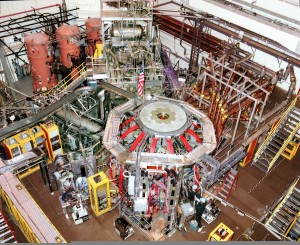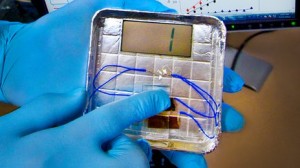Posts Tagged ‘alternative energy’
Nanocones for Cheap Solar Cells
This dovetails on the article about the solar-powered airplane. While the efficiency of solar panels is critical to making them worth deploying as an alternative to fossil fuels, that’s only half the issue. The other half, of course, is price. Right now, the cost is a dollar a watt, which is pretty hefty. Fortunately, increasing efficiency and decreasing price go hand-in-hand. In an earlier article, we introduced the idea that adding wrinkles might make the cells more efficient, and therefore cheaper. This time, it’s a different method of increasing surface area: cones.
Of course, because these are really small cones, they are dubbed “nanocones,” and the Stanford University study was published in “Nano Letters.” There will come a point where we will have to stop using nano- to prefix to everything that’s in the nanometer range, since most technology already incorporates components in that range, and in the near future, all of it will. We’ll need to be a bit more specific. After all, we already have carbon nanocones, which are altogether different in application from these silicon cones. But that’s just a pet-peeve of mine – for now, nano’s captured everyone’s imagination, so I guess we’ll go with it everywhere we can.
The key to the cost-savings of this design is the space between the cones. In a normal polymer cell, you need a full second layer for the polymer, but with this design, it can simply fill the gaps. Having a second layer involves using other materials, so this method renders those unnecessary.
Solar Airplane Upgrading For World Tour
Yesterday, I wrote an article about the energy we could get out of a fusion reactor in development. Today, it’s about the energy we could get from a fusion reactor already in service: the Sun.
Solar power lacks the flair of fusion, and I’m afraid the story of a plane that cruises at 43 mph probably won’t do much to help that along, but there’s a lot to the Solar Impulse that captures the imagination. There’s its magnificent wingspan, for instance:
That’s a 208 feet wingspan folks, dwarfing many airliners and bombers. The kicker is that the whole thing weighs in at a max takeoff weight of two tons – 4,400 pounds. It’s empty weight is about the same as your car’s. Think for a moment about the brilliant design and fine construction keeping the weight down must have required. There’s no two ways about it – just the size-to-weight issue makes this a marvel of engineering.
A Step Forward for Fusion Power
Could it be that, in my lifetime, we will at least develop viable fusion power? I mean, the various space agencies are killing my hope that we’ll send someone to Mars in the next fifty years, but maybe we’re all desperate enough for energy that we can pull this colossal trick off, and catapult civilization to the next stage?
University of Tennessee researchers have successfully tested the technology that keeps the central solenoid of a tokamak fusion reactor stable. The actual solenoid for the ITER (International Thermonuclear Experimental Reactor) in France can now be built by General Atomics in San Diego. If successful, ITER will start running deuterium-tritium reactions in 2026. The expectation is that it will be able to output ten times more power than it inputs. Considering fusion reactors up till now have consumed more than they produce, this is a big leap.
Just to orient ourselves, this is a tokamak-type reactor from the outside:
And the internal torus surrounding the solenoid:
Electricity From Viruses
Here comes the grey goo! Scientists at U.C. Berkeley have created a tiny generator using a combination of pressure and a film of specially engineered viruses that covert mechanical energy into electricity. You can read the BBC story here.
The viruses – which apparently only attack bacteria and are harmless to humans (for now) – can only produce enough energy to make the number “1” light up on an LCD. But think about what we’ve got here: potentially self-replicating, self-assembling viruses that get more energetic under pressure. This is going to be grey goo, right? This is what could power nanotechnology gone wild – tiny little virus-powered robots proliferating all over the place, pushing life as we know it out of the way.
Okay, okay, so I’m going a bit overboard on the scifi side, but remember that the grey goo scenario wasn’t thought up by science fiction writers, but by mathematical genius John von Neumann and nanotech researcher Eric Drexler. As long as we’re just talking about robotics and electronics, we really don’t have much to worry about, but once you start throwing biological material in – material that is designed to evolve and adapt on its own – then things get much more interesting.



